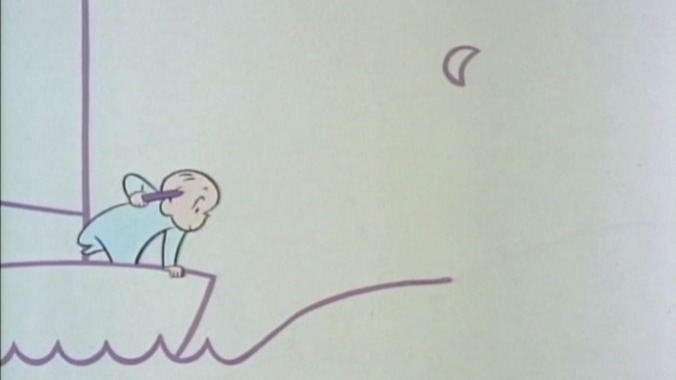The Weekend Watch: Harold and the Purple Crayon and Other Harold Stories
Subscriber Exclusive

Welcome to The Weekend Watch, a weekly column focusing on a movie—new, old or somewhere in between, but out either in theaters or on a streaming service near you—worth catching on a cozy Friday night or a lazy Sunday morning. Comments welcome!
Even before Zachary Levi outed himself as a real anti-vax libertarian wacko, he was kind of an annoying presence. Now, after Shazam! and its much worse sequel, he’s getting typecast as man-children more literal than those usually described as such. No longer playing a kid able to access a jacked super-adult’s body, in Harold and the Purple Crayon, he’s starring as the grown-up version of the children’s book scribbler (for god knows what reason). In order to avoid all things Levi and to focus more on the creative potential of the imagination-centric subject matter, this Weekend Watch will focus on early animated adaptations of this work. If you want to be particular, we can say that it’s Harold and the Purple Crayon and Other Harold Stories, which packaged together three short films: 1959’s Harold and the Purple Crayon, 1971’s A Picture for Harold’s Room and 1974’s Harold’s Fairy Tale. These shorts are available to stream free at the links above.
All three films come from the original author of the children’s book, Crockett Johnson, with the first helmed by David Piel (probably not the same guy who later appeared in Killer Klowns from Outer Space, but I can’t confirm that) and the latter two by the Oscar-winning Gene Deitch. Deitch was a longtime United Productions of America (UPA) animator, working on all sorts of productions for the company (formed in the wake of the famous 1941 Disney strike) and embracing their house style. This style veered away from realism and detail, favoring abstraction and minimalist modernism. In the middle of a career spanning scrapped Hobbit adaptations, Popeye, Tom & Jerry and more, Deitch dedicated some time to tackling storybooks.
I’ve always been partial to UPA’s animation, and it’s a perfect fit for Harold. As Crockett Johnson apparently told Deitch, “Never overlook the art of the seemingly simple.” This is the guiding principle of good children’s books and UPA cartoons alike, and these cute short films find all the magic inherent in the humble line. Before we get to Deitch’s work, we should look at the story’s first leap to animation. Narrator Norman Rose walks us through Harold’s self-made world, the story becoming an even younger-skewing version of Duck Amuck’s fourth-wall break. Harold is both animation and animator, dreamer and dream. It’s a lovely, empowering sentiment used for more earnest ends than in the famous Looney Tunes entry that makes this more nightmarish and existential. Rose is perhaps the best part of the whole short, his baritone getting more and more manic as Harold himself panics. Perhaps the second-best part is that Harold is credited with “Lighting and Scenery.”
-

-

-

-

-

-

-

-

-

-

-

-

-

-

-

-

-

-

-

-

-

-

-

-

-

-

-

-

-

-

-

-

-

-

-

-

-

-

-

-








































